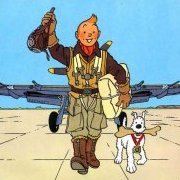Search the Community
Showing results for tags 'Ford Model T'.
-
Here's my next...moving up into 1/35th. Although I have always been a fan of all things 1/72nd I have to admit that 1/35th scale is the best scale for vehicles. There is just so much room for proper weathering, parts replacement, etc...I will have a good time with this one and may overdo it a bit on the rain streaking, rusty bit, etc...so bear with me. I'll try not to, but I need practice. Here's a good Wiki link about it. I didn't know that so few were made. https://en.wikipedia.org/wiki/Ford_FT-B Not a huge amount of parts. That's alright. What there is is finely moulded, with excellent detail and no flash at all. Doesn't look like too complex a build (he said optimistically)... I'll get into it before Christmas. --John
- 22 replies
-
- 13
-

-
- Ford Model T
- 1/35th
-
(and 1 more)
Tagged with:
-
I don't normally do military vehicles. I enjoyed this especially the detail in the engine and chassis. Unfortunately I think I must have bent it when constructing as certain bits didn't really line up!!
- 1 reply
-
- 9
-

-
- Ambulance
- Ford Model T
-
(and 1 more)
Tagged with:
-
WWI ANZAC Desert Patrol (DS3510) 1:35 ICM via Hannants Formed in 1914, the Australian and New Zealand Army Corps (ANZAC) played a substantial part in WWI often in areas that are seldom given the prominence of the Western Front. They were a major player in Gallipoli where they were heavily mauled due to the Lions led by Donkeys approach that pervaded at the time. They also served in Palestine and Egypt, and it was the former where they used the then new Ford Model T to replace the previous vehicles that were suffering due to the poor availability of spares, They used six of them as Light Armoured Cars, often mounting weapons in a manner that became more familiar in WWII in the shape of the LRDG. The Kits The kits arrive in the usual ICM top-opening box with the captive flap on the lower tray and artwork depicting the contents on the lid. Whoever puts those lids together certainly makes them tight and difficult to get off even after cutting the tape between the two parts. Model T 1917 Touring WWI Australian Service (35667) Despite being small, this is a full-detail kit and includes a nicely detailed representation of the engine using 11 parts, a two-part radiator that is moulded into the front axle and attaches to the front of the body shell along with four lifting eyes inside the engine compartment. The completed engine is dropped in behind the rad and with the chassis upended the exhaust is put in place linked to the exhaust manifold on the side of the block. The rear axle of the Model T was suspended on a single lateral leaf-spring, and this is next to be constructed along with the differential and drive shaft assembly. This is also fitted to the underside with various swing-arms and the steering mechanism, then the four single-part wheels are installed and the model is righted once you've had a few moments to appreciate the detail of the wheels, which even have the valves moulded-in. The vehicle looks a bit odd with no upper body, so with the steering column fitted the crew compartment is made up from front, sides and back which have the doors moulded in and the base of the windscreen mount added as a separate part. The cylindrical fuel tank is fitted across the cab in a gap in the floor, and additional fuel is glued to the front bulkhead as a row of four jerry cans in a box on the left side as this is a right-hand drive vehicle. The foot pedals and handbrake are added on the right and the bench seats are made up from bottom cushions (literally!), stiff back with additional cushion and armchair-like sides. Before these are fitted the fuel tank is boxed in and then they can be fixed in place alongside the folded four-part hood and the steering wheel complete with boss and two stalks, one of which was the throttle, surprisingly enough. The pedals on the floor didn't work exactly as you or I would expect either, so it's probably for the best that few of us would ever get chance to drive one. The windscreen can be found on the clear sprue as you'd expect as can the rear light, the front ancillary light and both of the wing-mounted headlights. The screen is in two parts with a C-shaped frame attached to the two halves and a pivot to allow them to be folded or opened. Another pair of fuel cans are attached to the left running board and a spare tyre (no hub) is found on the right. Markings There is only one colour and that is olive green that is used on both decal options, both of which were used in Palestine in 1918. Each one has a code on its bonnet/hood and a unit crest on the rear passenger door. Model T 1917 Utility WWI Australian Army Car (35664) The engine, chassis and floor pan of this kit is the same as the Touring except for a tow-part fuel tank set below the cab. The truck bed is made up of the bed, sides, front and rear sections in addition to the outer curved panels, bench seat and optional rolled up canvas cover attached to the right bed side. The two-part battery is fitted to the driving compartment bulkhead, along with the scuttle, doors and foot pedals. The gear stick and steering column are then fitted to the chassis as is the truck bed assembly. This assembly is then glued into position between the truck bed and engine compartment. Each of the two-part bonnet sections are fitted with grab handles, then fixed together, before being fitted to the engine bay. If you’re very careful, the modeller could cut the lower section of one side of the bonnet and fold it up along the hinge line to show off the engine. The semi open cab consists of the rear three-piece bulkhead, roof and two side sections, which leaves the upper door areas exposed. The windscreen is made up from upper and lower sections that can be folded or extended. The two headlights and single tail light are assembled and fitted, along with the spare tyre, a storage box and water container rack. Markings The small decal sheet contains identification numbers and markings for two vehicles. The two vehicles are both painted in the overall sand scheme with khaki for the canvas cover. Model T Utility 1917, Palestine 1918 Model T Utility 1917, Dead Sea Region, Palestine 1918 Model T 1917 LCP WWI Australian Army Car(35663) Yes - these are the same sprues. This kit shares the same sprues as the Utility car, and diverges after the creation of the truck bed and crew cab, omitting the canvas roof and including a yoke for the machine gun in the passenger seat foot well plus a back for the bench seat. The gun is in three parts with the barrel seemingly rested on the yoke and having no other visible means of support, which might require some detective work to make look realistic. The same water rack, tool box and lights are fitted to this model as the previous option. Markings The small decal sheet contains identification numbers for two vehicles and a small crest for the radiator. The two vehicles are both painted in the overall sand scheme. Model T LCP, Dead Sea Region, Palestine 1918 Model T LCP, Palestine 1918 Conclusion ICM have amalgamated three kits into the one box for a very cost-effective package that would be most useful for the diorama buff as well as someone that just wants all three variants on the Model T, but not in black. Available in the UK from importers H G Hannants Ltd. Review sample courtesy of



